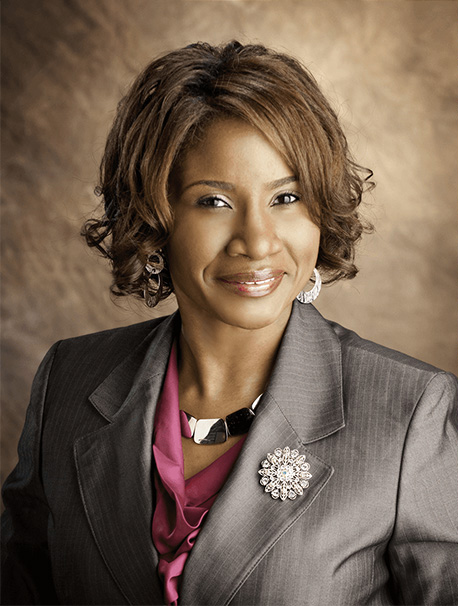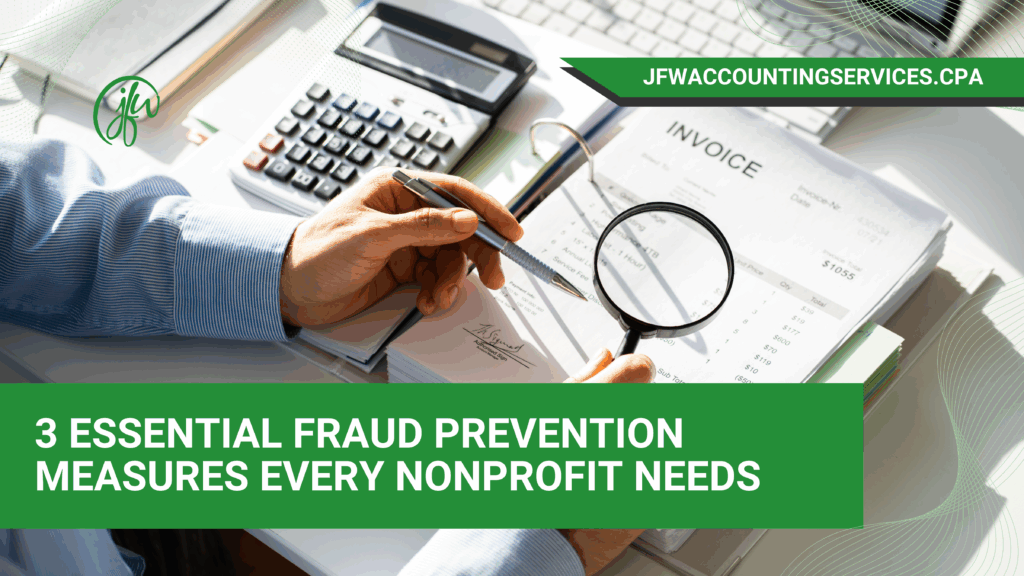Fraud costs nonprofits billions of dollars each year — money that should be funding your mission, not lining the pockets of fraudsters. Whether it’s a fake invoice, a phishing email, or an insider quietly sFraud costs nonprofits billions of dollars each year — money that should be funding your mission, not lining the pockets of fraudsters. Whether it’s a fake invoice, a phishing email, or an insider quietly siphoning funds, one weak spot in your financial systems can drain resources and erode donor trust.
The good news? With a few essential internal controls, you can drastically reduce your organization’s risk. Here are three critical fraud prevention measures every nonprofit should have in place.
Why Phishing Is Every Nonprofit’s #1 Cyber Risk
Phishing remains one of the most pervasive dangers to nonprofit operations. Research shows that approximately one in three untrained employees falls victim to phishing attempts. These attacks have grown more sophisticated, with fraudsters now using artificial intelligence and machine learning to create convincing fake emails that trick even cautious staff members.
Signs of phishing to train staff to spot:
- Urgent requests demanding immediate action
- Slightly misspelled email addresses or domain names
- Unexpected attachments or links
- Messages that bypass normal approval processes
The consequences of a successful phishing attack extend beyond a compromised email account. Once inside your systems, attackers can access donor information, financial records, and sensitive operational data. They may install malware that tracks keystrokes to steal passwords, or deploy ransomware that locks your entire network until you pay a ransom.
Training your team to recognize phishing attempts starts with regular education on current tactics. Teach staff to verify sender email addresses carefully, watch for urgent requests that pressure immediate action, and never click links or download attachments from unexpected sources. Implementing phishing simulation exercises gives your team practice identifying real threats in a safe environment.
The Fraud Schemes That Target Smaller Organizations
Billing fraud often involves employees creating fake vendors or submitting inflated invoices for services never rendered. Check tampering can range from forging signatures to altering payee names or amounts. These schemes succeed when organizations lack proper oversight and verification processes.
Nonprofits are most vulnerable to:
- Billing fraud — fake vendors, inflated invoices
- Check tampering — forged signatures, altered payee names
- Vendor fraud — duplicate or overbilled invoices
- Grant scams — fake funding sources that require upfront fees
Vendor fraud presents another risk. Scammers submit fake invoices or overbill for services, counting on busy staff members who may not verify every payment request thoroughly. They study your organization’s payment patterns and create convincing documentation that appears legitimate at first glance.
Grant scams target nonprofits by posing as funding sources. These fraudsters promise grants in exchange for upfront fees or sensitive information. They exploit your desire to secure funding, knowing that many organizations operate on tight budgets and actively seek new revenue sources.
Dual Authorization: The Most Powerful Internal Control Against Fraud
Dual authorization for payments creates a system where no single person can complete a financial transaction alone. This control prevents fraud and catches honest mistakes before money leaves your account.
Best practices:
- Set dollar thresholds (e.g., all payments over $5,000 require two signatures)
- Include at least one approver outside the accounting department
- Use accounting software that enforces dual-approval rules
- Separate duties: one person initiates, another approves
Start by setting dollar thresholds that trigger the dual authorization requirement. Many organizations require two approvals for any payment over $5,000, though you should set limits based on your organization’s size and risk tolerance. The approvers should include someone outside the accounting department who understands the nature of the expense.
The dual authorization process works best when you assign clear roles. One person initiates the payment, another reviews the supporting documentation and purpose, and both must approve before the transaction processes. This separation means a would-be fraudster would need to collude with another employee, which significantly reduces risk.
Your accounting software should enforce these controls at the system level. Manual workarounds defeat the purpose of dual authorization, so configure your technology to require proper approvals before payments process. Segregation of duties in your accounting systems prevents a single employee from controlling too many aspects of your financial operations.
Protecting Sensitive Information at Every Step
The way your organization shares and stores sensitive information directly impacts your vulnerability to fraud. Creating clear protocols for data handling protects both your organization and the people you serve.
Secure handling should include:
- Role-based access (only staff who need it can see data)
- Encryption for data at rest and in transit
- Secure file-sharing tools instead of regular email
- Locked storage for paper records and shredding when no longer needed
First, limit access to sensitive information based on job requirements. Not every employee needs access to donor social security numbers, bank account information, or confidential program data. Implement role-based permissions in your systems that grant access only to those who need specific information to perform their duties.
Encryption should protect all sensitive data, both at rest in your systems and in transit when shared electronically. When staff must share confidential information via email, use encrypted messaging services rather than standard email. Better yet, use secure file-sharing platforms that allow you to control who accesses specific documents and track when they view them.
Physical document security matters too. Keep sensitive paper records in locked filing cabinets within secured rooms. Establish clear procedures for document retention and destruction, ensuring that when you no longer need records, you shred them properly rather than simply discarding them.
Building a Culture of Internal Controls That Lasts
Your internal control environment forms the foundation of your fraud prevention strategy. Research shows that 68% of nonprofits lack documented policies for responding to cyberattacks, and 71% allow staff to use unsecured personal devices to access organizational emails and business files. These gaps create openings for both internal fraud and external attacks.
To strengthen oversight:
- Document all financial policies and processes
- Conduct annual (or more frequent) risk assessments
- Reconcile accounts monthly and investigate discrepancies immediately
- Encourage staff to report suspicious activity without fear
Start by documenting all your financial processes. When procedures exist only in someone’s head, you create vulnerability. Written policies ensure consistency and make it easier to spot when someone deviates from proper procedures.
Regular risk assessments help you identify weak points in your operations before fraudsters exploit them. Review your controls annually at minimum, and more frequently when you implement new systems or experience staff turnover. Ask yourself where money or data could disappear without detection, then build controls to close those gaps.
Monitoring and review catch problems early. Reconcile all accounts monthly and investigate any discrepancies immediately. Review financial reports for unusual patterns or transactions. The longer fraud continues, the larger the losses grow, so quick detection limits damage.
Creating a culture of accountability means everyone understands their role in protecting organizational assets. When employees see leadership taking fraud prevention seriously, they pay closer attention to suspicious activity and feel more comfortable reporting concerns.
Take Action: Safeguard Your Nonprofit’s Mission and Donors
The financial and reputational costs of fraud can devastate nonprofits. Strong internal controls and fraud prevention strategies protect your organization, your donors, and the people who depend on your programs.Contact us today to learn how JFW Accounting Services can help strengthen your internal controls and protect your organization from fraud. Our team specializes in implementing dual authorization processes, improving data security practices, and building comprehensive fraud prevention programs tailored to nonprofit operations. We work with you to assess your current vulnerabilities and develop practical solutions that fit your budget and staffing structure, allowing you to focus on your mission with confidence that your financial infrastructure remains secure.

Jo-Anne Williams Barnes, is a Certified Public Accountant (CPA) and Chartered Global Management Accountant (CGMA) holding a Master’s of Science in Accounting (MSA) and a Master’s in Business Administration (MBA). Additionally, she holds a Bachelor of Science (BS) in Accounting from the University of Baltimore and is a seasoned accounting professional with several years of experience in the field of managing financial records for non-profits, small, medium, and large businesses. Jo-Anne is a certified Sage Intacct Accounting and Implementation Specialist, a certified QuickBooks ProAdvisor, an AICPA Not-for-Profit Certificate II holder, and Standard for Excellence Licensed Consultant. Additionally, Jo-Anne is a member of American Institute of Certified Public Accountant (AICPA), Maryland Association of Certified Public Accountants (MACPA), and Greater Washington Society of Certified Public Accountants (GWSCPA) where she continues to keep abreast on the latest industry trends and changes.

